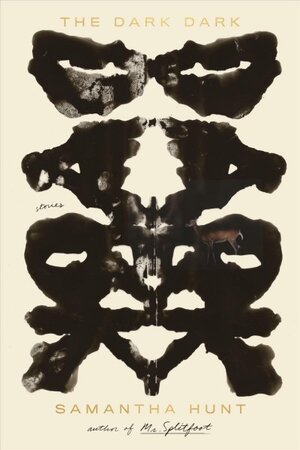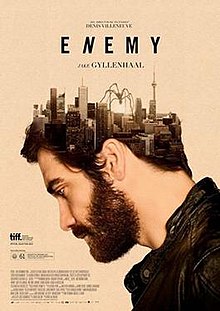So I have just read the new collection from Mike Allen, entitled Aftermath of an Industrial Accident. As a long time fan of his work, I have to just come out and say this. I don’t think Mike Allen is actually human. Honestly, I am not at all sure what he could be. I do know that he is a writer of exquisite dreamlike and surreal poetry and prose. And like clockwork you can count on a new Mike Allen story or poem or book, sure to be full of vertiginous landscapes and strangely changing characters, arriving at a pace that surely can not be human. There just seems to be some kind of dark intellect behind these “dream transmissions”. And that must be what these are. Dream transmissions from some hidden and unseen entity that goes by the name Mike Allen. Sometimes I think he is some kind of bizarre dream machine, locked away in some derelict factory’s sub-basement, churning out mad book after mad book. Sometimes I think he is some kind of nightmare octopus, sending its sickly, corrupting tentacles out in the form of ink and paper. But I guess it really does not matter what he is, does it? What matters is these strange books that keep appearing on my bookshelf, and the ominous and wonderful dreams that are contained within.
Out of all of the outlets of Mike’s works, poetry collections, novels, I think my favorites are his short story collections. I don’t see his various story collections as individual works neatly divided into different subject matter, but as transmissions of whatever dream space Mike is exploring recently. He creates these short story collections that seem like they are transported directly out of one of Mike’s dreams. He reminds me a bit of Clark Ashton Smith or Ray Bradbury, in the freedom he takes in using different writing genres as if they were different paints to be used, and for his ability to put his imagination directly on paper, deeply personal and deeply obscure. Mike’s work engages all the various genres of imaginative fiction, weird sci-fi, fantasy, magic realism, etc. But most of Mike’s work tends to skew more towards the horror end of the genre spectrum, but Mike is rarely pessimistic in his writing, no matter how surreal or bizarre his stories get, you can feel the creator in the background absolutely loving what he is writing, and Mike’s love of horror and fantasy is infectious. This is horror written out of joy, out of love.
Throughout Mike’s career, he has written many tales which to me are just essential. In his first collection, Unseaming, it contains some of the absolute masterworks of contemporary weird horror. In Her Acres of Pastoral Playground, a man and his wife are trying to survive in this Lovecraftian post-apocalyptic world. He is trying to keep the day to day life he loves going, but strange ruptures in reality keep twisting and mutilating reality and his wife's body. In The Button Bin, you have a tale of incestuous relations, corruptions of the body, strange parasitic entities, and mysterious boxes of buttons. The story is about this missing girl, the victim of a car crash and an abduction. But she is not really present in the story, it more revolves around the men who desire her, and who wish her harm. One of the men knew her physically in the most forbidden of fashions, the other man broke down her body and absorbed her into himself, thereby, perversely, knowing her inside and out. The two men end up meeting in this tale of obsession and jealousy. By centering the story on the men, it finds a kind of troubling understanding of their motivations, and a deeper view into their grotesque desires. And the story has this ending that brings their obscene longings closer together, physically enveloping each other in a finale straight out of the darkest regions of nightmare. The story of The Button Bin continues and enlarges in scale and disturbing imagery in its sequels The Quiltmaker, also found in Unseaming, and in The Comforter, which can be found in the short novel/novella omnibus A Sinister Quartet. The Button Bin, The Quiltmaker, and The Comforter make for one of the most bizarre and epic trilogies in the history of horror literature. The “Button Bin” trilogy centers on these creatures which are made up of humans enveloped in humans enveloped in humans, to the point where they are no longer human, “Buttoning” them together in what must be one of the most striking concepts I have ever read. It has this kind of fairy tale heart but is full-on body horror and walks the line between mind-bending horror and dark fantasy tale. With work this original, you are kind of taken aback, you read along, no idea where the story is leading, and ending up in a place you could not have predicted. In another of my favorites tales from Unseaming, The Blessed Days, every human wakes up covered in blood, every, single, day. This is another story that operates in this kind of hazy dream logic. Mayan mythology, dreams of other dimensions, and strange worm hydras intertwine in this tale of the absolute best kind of nightmare horror fiction. Unseaming is one of the masterworks of modern horror, in turns bizarre, macabre, and unsettling.
In his follow up collection The Spider Tapestries, Mike serves us with a more delirious collection, certainly a bit more in the realm of fantasy than his previous collection Unseaming. In the self-titled story The Spider Tapestries we find a non-human world of spiders and their drug-induced dreamings. In Twa Sisters, Mike explores modeling and the imagery of the human body by exploding it into 1,000 different strange and new forms. I think if Unseaming was a collection of dread-inducing nightmares, The Spider Tapestries is a delirium machine, seeking to show with each strange new marvel how erotic and delightfully unsettling the transforming of reality can be.
Now with Mike’s new collection, Aftermath of an Industrial Accident, he brings these two approaches to dreamlike prose together. It’s a wonderful collection of poetry and short stories that run the gamut from his most fantastic work to his most disturbing work. In this collection, you will find some of the most innovative and groundbreaking fiction being written today. In With Shining Gifts that Took All Eyes, you have this young couple and this peculiar plant the boyfriend took home after a day of hiking. While he is in the other room seemingly preoccupied, the woman finds herself mystified and alarmed by the sound of boys screaming her name from outside her windows, where night is falling and a hazy fog obscures sight. Meanwhile, something seems to be stalking her inside the house, something that may have to do with the plant that they recently brought into the house. Overshadowing all this there is a strange sexual tension and a sinister atmosphere of obscurity that is palpable. This is one of the great works of horror fiction of the past twenty years. My description does not do justice to the tenebrous strangeness of this work. And now to look at another one of my favorites from this collection, have you ever just caught a glimpse of a film on television, some scene that just transfixes you to the screen, and you obsess over what that film was and make it a mission to track that film down? His story Tardigrade is just like that. It seems to be the middle of a scene of some murky narrative. A woman is trapped in a room that is being observed and possibly recorded by some kind of outside intellect, that may or may not be human. She is compelled to watch on a computer screen a video recording of her husband being forced to undergo some kind of metamorphosis brought upon him by a shadowy figure who may be a human woman, she delivers what is seemingly a kind of parasite through her mouth and into his body, changing him utterly. Answers are not readily available, but you will be thinking of this story long after you put the book down.
Mike Allen may be the premier poet of this era of weird horror and surrealist fantasy. His work is completely fearless. He takes no genre boundaries as sacred. He writes in whatever mode best suits his vision. His writing style is instantly recognizable but what you will be getting from a new work from Mike is far from known, he changes subject matter and method of attack with every work. Be Mike Allen an infernal dream machine, a phantasmic octopus, or a regular human being, I don’t think matters at this point, my brain is so saturated with his infectious nightmare visions, that I can no longer tell the difference between the three anymore.









